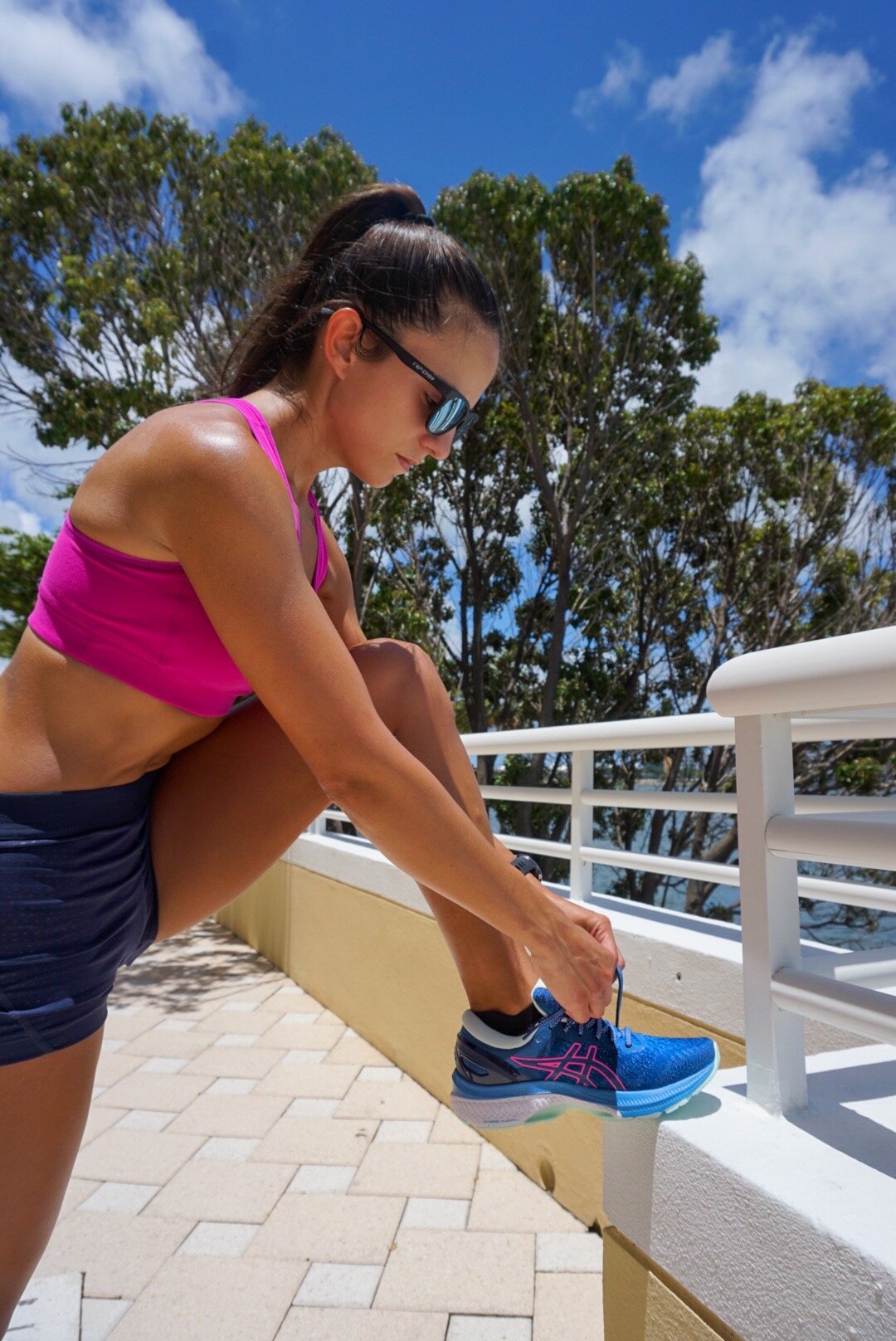As runners, you will catch us all complaining at some point about the weather and how it gets in the way of training. Freezing cold, snowstorms, and icy roads and trails are dreaded during the winter months, leaving us to suffer on the treadmill for most runs. We long for warmer days, which end up coming rather quickly. Most runners struggle to maintain their fast paces during the summer months. It may get discouraging but once you understand why this happens, you will learn to be okay with the undesirable run stats.
Read moreWhat I'm Running in This Summer
Getting myself a whole new lineup for the shoe rotation always makes summer marathon training a little more motivating! I’m listing out all of my current favorites, with a full review to come!
Read moreSummer Training Success: Featuring Asics GEL-Kayano 27
Sponsored by Zappos. All opinions are my own.
Training during these hot summer months can definitely make even the strongest of runners feel so out of shape! The good thing is that the rumors are true—training in the heat helps build fitness. Every time I’ve planned a fall race, I end up dreading the fact that the bulk of the training and the most intense weeks will land on the hottest part of the year. This is coming from someone who lives in a warm climate year round! Miami is regularly warm, so you would think I am used to it even when summer comes around. But it is a different kind of heat from June through September—very high humidity and dew point and a “feels like” temperature of 100+ degrees almost every single day!
Sadly, we’ve had the majority of our races canceled for the rest of the year, so it can be tough to find the motivation to train at all, especially when it’s stifling outside. I mentioned before and I’ll say it over and over again—new shoes can do wonders to give us a push to get out the door! I’m on my fourth week of using my ASICS GEL-Kayano 27 from Zappos and I’m truly loving them for the bulk of my training. Since my focus is improving my endurance, I’m incorporating several longer easy to medium-paced runs and this pair has been perfect!
Keep It Light
This goes for not just your summer training load, but also your entire outfit. The most comfortable way to run when it’s extremely warm out is with the lightest gear. You don’t want your clothes sticking to you, so make sure you wear light, breathable materials that keep you dry. This is especially important when it comes to shoes. You don’t want your sweat to keep you from reaching your pace goals! I, myself, am definitely not a fan of running shoes that absorb all my sweat and end up feeling heavy and sponge-like—no thank you!
The GEL-Kayano 27 have been the perfect pair for summer running since they are made with a mesh upper that allows air to flow through the shoes to help keep you dry. This is a bit of an update from the previous version, since they expanded the space in between the material’s fibers. Even the sock liner inside the shoe stays dry! By the way, the sock liner actually adds extra plush cushioning that I feel makes long runs much more comfortable! My feet tend to get sore, especially since I’ve had 12-years full of bouts of plantar fasciitis, so any extra cushioning that does not add weight is a plus.
Versatility
I have a neutral running stance and normal arch height, so I generally don’t have to worry about finding a good stability shoe. What I’ve noticed when researching running shoes is that it’s hard to find a pair that works really well for both neutral and overpronating runners. Usually the stability aspect tends to feel stiffer along the outsole if you are a neutral runner, therefore not as comfortable for speedier runs.
The ASICS GEL-Kayano 27, however, is the best of both worlds! The DUOMAX support system helps limit the foot rolling inward (overpronate), but not at the cost of cushioning. It’s made with softer materials so from when the foot strikes the ground all the way to the push-off phase, it keeps the impact less intense, while providing the springiness we want to run at any pace. I noticed this the most when making turns on my runs—the shoe feels like it conforms to the shape of your foot like a foam mattress would, but kept my ankle secure as it rotated.
All in all, I feel the ASICS GEL-Kayano 27 does a great job at protecting my injury-prone feet during my high-mileage training program. After trying them out for every type of run—easy, long, sprints, tempo runs, and hill running, I find they work well for each, but are truly the perfect fit for medium to long consistently paced runs. Since these have been my go-to pair for the bulk of my easy and recovery runs, I even bought a second pair! There are several colors to choose from at Zappos, so take a look for yourself and don’t forget about signing up for the Zappos rewards so you can take advantage of the many benefits, like free expedited shipping, points on every purchase, and a 365 day return policy!





